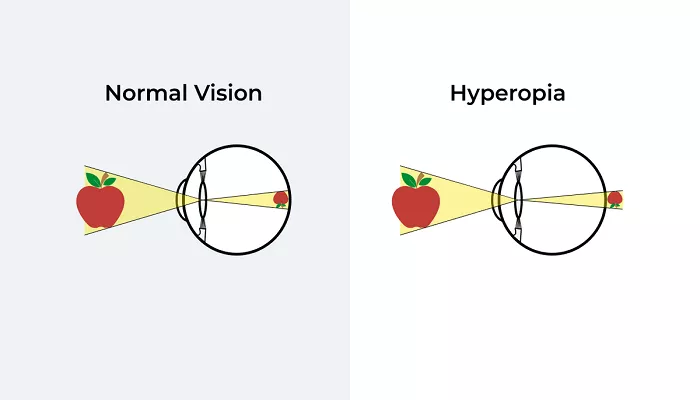Long-sightedness, also known as hyperopia or hypermetropia, is a common vision condition where distant objects are seen clearly, but close ones appear blurry. This article explores the causes of long-sightedness, its symptoms, and available treatments, aiming to provide a comprehensive understanding for those interested in eye health and aesthetics.
What is Long-Sightedness
How the Eye Works
The eye focuses light onto the retina to create clear images. In long-sightedness, the eye’s shape causes light to focus behind the retina, leading to blurred near vision.
Causes of Long-Sightedness
- Shorter Eyeball Length: A shorter eyeball causes light to focus behind the retina.
- Flat Cornea: A flatter cornea reduces the eye’s focusing power, leading to hyperopia.
- Thin Lens: A thinner lens can also contribute to improper focusing of light.
- Genetics: Family history plays a significant role in the development of hyperopia.
- Age-Related Changes: As people age, the lens becomes less flexible, affecting near vision.
Symptoms of Long-Sightedness
- Blurred vision when looking at close objects.
- Eye strain or discomfort during tasks like reading.
- Headaches after prolonged close work.
- Difficulty concentrating on near tasks.
Diagnosis
An eye examination by an optometrist can diagnose hyperopia. Tests may include:
- Visual acuity tests.
- Refraction assessments.
- Eye health evaluations.
Treatment Options
Eyeglasses
Convex lenses in glasses help focus light correctly onto the retina, improving near vision.
Contact Lenses
Contact lenses offer a wider field of vision and are suitable for active lifestyles.
Refractive Surgery
Procedures like LASIK reshape the cornea to correct hyperopia.
Intraocular Lenses
In some cases, implanting lenses inside the eye can correct vision.
Prevention and Management
While hyperopia cannot be prevented, regular eye exams can detect changes early. Managing symptoms includes:
- Using prescribed corrective lenses.
- Taking breaks during close work.
- Ensuring proper lighting when reading or working.
Conclusion
Long-sightedness is a manageable condition with various treatment options available. Understanding its causes and symptoms is crucial for maintaining eye health. Regular check-ups and appropriate corrective measures can significantly improve quality of life for those affected.


